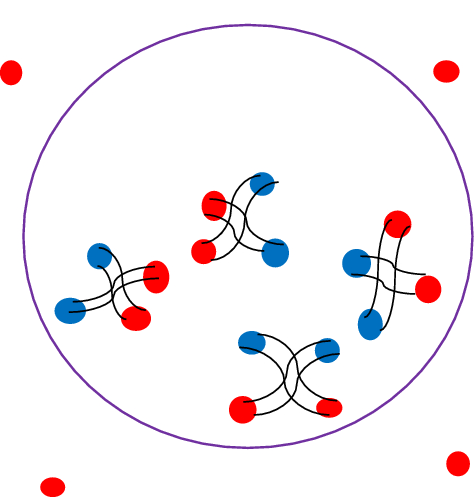EPJ B Highlight - Exploring exotic behaviours in population-imbalanced fermionic systems
- Details
- Published on 11 March 2024

New studies show that oscillations in the quantum states of composite particles in trapped systems can be adjusted using an external magnetic field.
Over the past 20 years, many physicists have studied ultra-cold fermionic systems contained in magnetic or optical traps. When an external magnetic field is applied to a two-species fermionic system, the particles can pair together to form composite ‘bosonic molecules’ with a full-integer spin. These molecules undergo “Bose-Einstein Condensation” when cooled, where all the particles accumulate in the lowest-energy quantum state. The precision of these experiments has now been improved by trapping the particles inside optical lattices: periodic patterns formed by counter-propagating laser beams.
Through new research published in EPJ B, Avinaba Mukherjee and Raka Dasgupta at the University of Calcutta, India, have theoretically predicted a distinctive trend in the oscillations of Bose-Einstein condensates formed from these fermions – which can be adjusted using an external magnetic field. They specifically addressed systems where the two species have unequal population (creating leftover unpaired fermions): leading to exotic new phases. Their result could help physicists to detect such novel phases of matter in imbalanced fermionic systems and could open up new opportunities for quantum technologies.
In their work, Mukherjee and Dasgupta explored how such a system would behave when they applied a technique often used to manipulate and control ultracold atomic gases. Named ‘Feshbach detuning’, it involves adjusting the energy required for forming bosonic molecules, using an external magnetic field.
The researchers discovered that when Feshbach detuning is above a certain threshold, the fraction of Bose-condensed particles will oscillate periodically – but below this threshold, there is no oscillation at all. Altogether, this revealed a linear relationship between the oscillation frequency, and the strength of Feshbach detuning they applied.
Even further, the duo found that the slope and position of this curve carried important information about which exotic phase of matter could be found in the system. Their result may eventually lead to discoveries of advanced new physical properties in these systems, which could be exploited across a diverse range of quantum technologies.
Mukherjee, A., Dasgupta, R. Periodic dynamics of population-imbalanced fermionic condensates in optical lattices. Eur. Phys. J. B 97:15 (2024). https://doi.org/10.1140/epjb/s10051-024-00649-9




